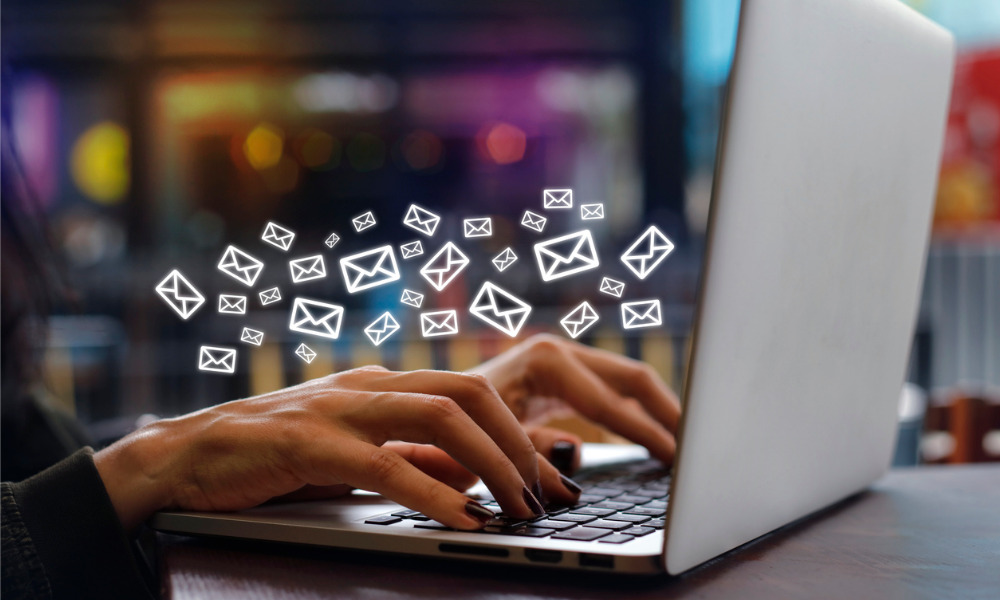
Here is how to remain professional when receiving hostile and overly critical email

While email has made workplace communication more convenient, negative email that is hostile and overly critical has the potential to be misread and misinterpreted – leading to unnecessary tension between colleagues.
This type of email is never easy to read and can easily get under your skin, but smart employees can stay professional with some of the strategies we share below.
Read more: HR boss wants staff to avoid work emails after hours
Emails have become so ubiquitous in the workplace that many employees feel overwhelmed and stressed out by the sheer volume they receive, which can impact their well-being and performance.
According to a recent survey by Wakefield Research for email platform Superhuman, 89% of respondents claim the daily task of sorting through an inbox of unopened emails or messages is one of the most unpleasant aspects of work. Another 38% say email fatigue is likely to push them to resign.
Additionally, the inherent characteristics of email can make gauging its true intent a little difficult. For instance, as a written medium, emails lack emotional cues such as tone of voice, facial expressions, and body language. So, a straightforward email from a manager asking for an update could come across as a critical judgement of an employee’s pace in getting things done.
In this light, it’s not surprising that some workers can be easily triggered by negative email.
While sending an angry reply to a negative email can be emotionally satisfying, it’s rarely the best approach. Below are some tips on how to professionally handle a negative email.
It’s easy for emotions to get the best of oneself, but the urge to reply in the heat of the moment could worsen the situation, create tension between colleagues, or even start an issue where there isn’t one to begin with. Emotions can cloud managers and employees’ judgment and mind, leading to a string of bad decisions.
It is best for employees to stop themselves from replying immediately to gain some clarity and perspective. Standing up and moving away from the desk after reading negative email can help calm an employee. Doing quick activities like taking a short walk, drinking water, having a quick meditation session, or even chatting with another colleague or friend can help release some tension before sitting back down to face the email.
When calm, carefully re-reading the email can help employees determine whether they misinterpreted the tone of the sender, or if the email really was intended to be hurtful. Take the time to re-read the email numerous times with an open mind to properly and deliberately assess how to respond. Taking notes and writing down the underlying issues being expressed by the sender can also help break the email down into manageable parts.
No matter what happens, stay calm and avoid getting defensive – instead keep responses as neutral and objective as possible.
Having a quick activity that works to calm nerves, such as squeezing a stress ball or a breathing exercise, is great for employees in cases where tension starts to build up.
Employees shouldn’t ignore an email that requires a reply because it could appear like they’re avoiding the situation. Instead, they should draft a professional reply that is short, straightforward, and devoid of sarcasm and irony. This minimizes the risk of accidentally sending the email prematurely and allows the sender to preview the message before sending it out.
Additionally, it is important to address any questions and concerns the email had and ask for clarification on certain parts where it may seem vague. When asking for clarification or a follow-up question, keep the sentence structure simple and craft in a way that does not seem demeaning or defensive.
Employees and managers alike need to know when an offline conversation is a better way to address certain issues. Offline conversations such as face-to-face meetings, phone calls, or video calls happen in real-time and can resolve tension and issues in a few minutes instead of going back and forth for days through email.
An offline conversation can also add depth and clarification on things that may be hard to interpret through a written form, like the tone of voice, body language, and facial expressions.
If the issue is not confidential, employees and managers can ask other co-workers for help and advice. Getting the opinion of a third party that could have more experience in handling miscommunication could provide a fresh perspective on the situation.
A second opinion on whether the email draft is an appropriate response to the negative email can help spot areas that can be improved further. Even if their output does not necessarily support the situation, it is still a wise move to keep their suggestions in mind if it can be applied in a different scenario that comes up in the future.
Read more: Should you snoop on your employees’ emails?
It is a good idea for employees to remind themselves not to take things personally, no matter how the email reads. A good attitude to take is to assume that sender does not mean to be rude and that the email was simply misinterpreted.
Even if it was intentionally written to be snarky, keep in mind that the co-worker or manager who sent the email may also be going through personal issues that has nothing to do with the you. For example, an employee who may be going through family problems may not be handling the stress well and is releasing the negative energy onto their emails.
No one in the workplace is immune from receiving a negative email. When a situation such as this happens, it is always best to remain calm and approach the matter professionally and unbiased. This can lessen the tension building up between colleagues and can even strengthen the communication between the two.